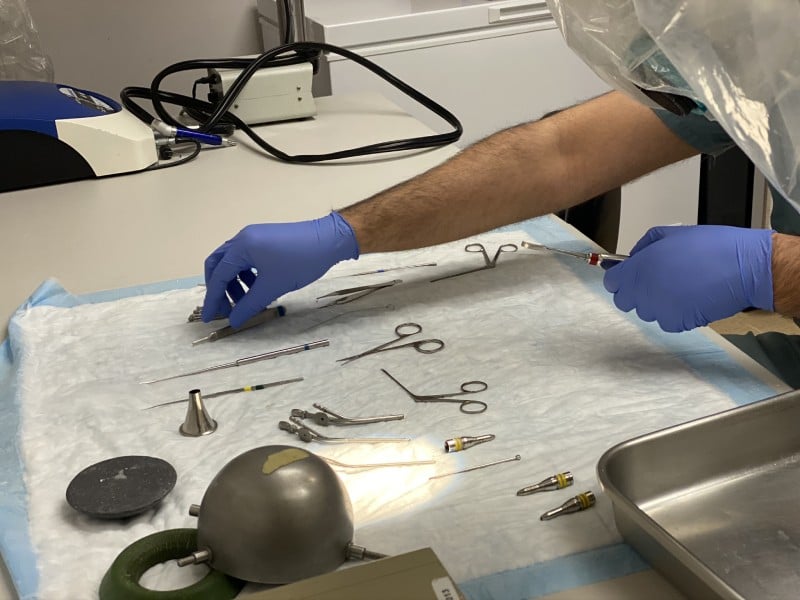By Dr. Hossein Mahboubi, MD, MPH
For decades, our fellowship program at the House Institute Foundation has educated neurotologists in surgical techniques of the temporal bone. Current fellow Hossein Mahboubi, MD, MPH, details the importance of his time spent in the bone lab.

The ear canal, eardrum, hearing bones, and inner ear containing the hearing and balance organs are all located within one of the bones that forms the skull and skull base named the temporal bone. Almost all of the surgeries involving the diseases of the ear and lateral skull base include removing parts of this bone to access various structures of the middle or inner ear. A pathway through this bone can also be created to reach the brainstem and cranial nerves to remove tumors such as meningiomas and vestibular schwannomas (also known as acoustic neuromas). Additionally, cranial nerves and vessels that take blood to and from the brain traverse within the bone or adjacent to it. These structures pass through two inches of space, some of them being within millimeters of each other. As such, ear and skull base operations are very delicate. The surgeon needs to be precise to remove any tumors without damaging the surrounding structures. A temporal bone lab is where ear surgeons practice these surgical techniques and drilling methods on cadaveric temporal bones that have been donated.

For fellows training to subspecialize in care and surgeries of the ear and skull base (formally called Neurotology and Skull Base Surgery), having a temporal bone lab is invaluable. The House Institute fellows have been fortunate to be able to practice and fine-tune their techniques in our temporal bone labs throughout our fellowship and prior to major surgeries. Our temporal bone lab has two working stations where the fellows can use the donated temporal bones during their dedicated educational time. The stations include operative microscopes, high-speed drilling machines, suction/irrigation machines, and standard otologic instruments. Once the bones are drilled, they are returned according to standard procedure, and new bones are provided for the following sessions. Working in this lab has been a great experience, and we hope that it continues to serve the current and future fellows for many years to come.
About Dr. Hossein Mahboubi

Hossein Mahboubi, MD, MPH, joined the House Institute Foundation as a clinical fellow in July 2019, where he is training to subspecialize in neurotology and skull base surgery. Prior to this, he completed his residency training in Otolaryngology (Head and Neck Surgery) at University of California, Irvine, in June 2019. Hossein was born and raised in a small town in Northern Iran by the Caspian Sea. Growing up in a family that valued education above all, he became fascinated with medicine and science. He worked diligently to get into the country’s top medical school, Tehran University of Medical Sciences. During medical school, he became interested in ear, nose, and throat surgery and decided to move to the U.S. to pursue his career at the frontiers of science. Hossein started a postdoctoral research fellowship at University of California, Irvine, where he did extensive research on the diseases of hearing and vestibular systems. This was followed by residency training at the same institution. Hossein has published several articles and book chapters, and presented his work at national meetings. His accomplishments include multiple institutional and national awards, as well as two prestigious resident research grants from the American Academy of Otolaryngology – Head and Neck Surgery.